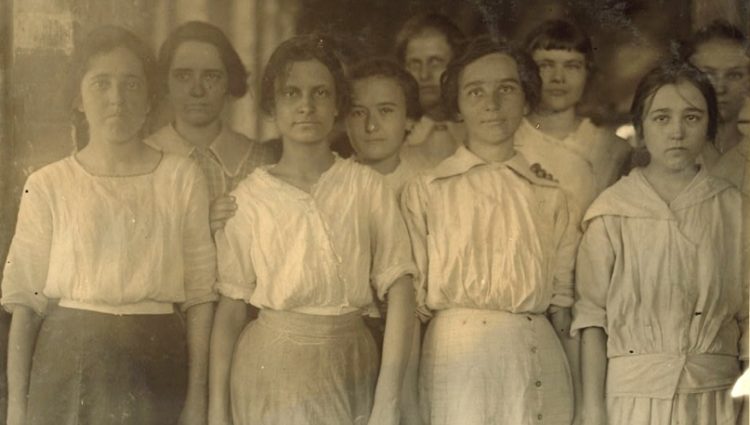I
Appalachian women are, arguably, the most unacknowledged and undervalued segment of our region. But . . . that fact wasn’t always so, particularly in the matriarchal Cherokee tribe, where lineage was matrilineal (meaning the descent was determined through the female line), and where women were completely independent. They could divorce and hold ownership. They maintained “significant political and economic power” and were active in “council meetings” and advisory roles.1)ICT Staff. “The Power of Cherokee Women.” Indian Country Today. September 13, 2018. Women were “heads of Cherokee households”2)Women History Blog. “Women’s Rights in Cherokee Society.” History of American Women. Dec 2008. and they worked hard as they farmed and preserved, maintained monies and traded successfully, prepped hides and crafted necessities.3)Women History Blog. “Women’s Rights in Cherokee Society.” History of American Women. Dec 2008. White settlers – particularly male white settlers – were “astonished”4)ICT Staff. “The Power of Cherokee Women.” Indian Country Today. September 13, 2018. to see how much power and equality Cherokee women had. The white man’s repeated brutality and cultural purge of the tribe ensured that Cherokee women were suppressed and oppressed.
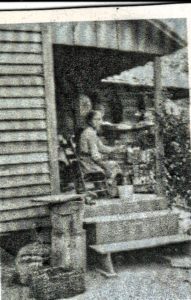
When immigrants came to this mountain region from the respective motherlands of Germany, Ireland, Scotland, Wales, and the Netherlands, women were often no more than baby-poppin’ workhorses. Why do I think so and why use such harsh language? Well, I heard oral histories that centered around my great and great-great-grandmothers. (Honestly, I could go back to 7th and 8th generations in my matriarchal ancestry.) I’ve seen the images of their happy, stout selves weakening year after year, work upon work, birth after birth, until they are back-bent, hollow-eyed, and skeletal by age 45. But our grandmothers and mothers have stories that will never be heard. Their histories and hard work are accounts that have lingered like mists across the Blue Ridge Mountains – ethereal and intangible. Our own stories are barely heard today, and, when they are told, they’re as slow dripping as molasses.
In my opinion, the most historically unrecognized fact about Appalachian women is their role as laborers. Their “woman’s work” wasn’t deemed “real work,” though I dare anyone out there to light a fire before dawn in a wood stove and make breakfast for a family of about twelve (after you’ve awakened and dressed the children), with no time to eat yourself, then feed and milk the cows or goats and gather eggs, then plant, hoe, and tend the acre garden at temperatures above 90 degrees with one baby strapped to your back and the rest hungrily working their little fingers by your side; then, continuing the work day, revisit the wood stove, realize the kindling and firewood’s empty so you chop wood and fire up the cook stove on such a hot day; boil water for clothes washing, then scrub them on a washing board; catch, kill, pluck, and singe a chicken (if you’re lucky), make dinner for twelve from scratch; finally sit down long enough to hear the blessing and eat a few bites; boil water on the same stove for dish washing and bathing, wash dishes, bathe the children and (if energy permits) bathe yourself; sew a quilt or churn butter or preserve food or mend clothes or make clothes; at night, read a verse from the bible (if you’re one of the few lucky women who can read) and say a prayer; then do your “wifely duties” and hope to God another mouth to feed won’t come. But you know it will. And that’s just some of the day. I dare anybody to say all that ain’t work!
II
As time moved forward, women changed from the late 1800s onward. Appalachian women began to work outside the home and became a new workforce, and that’s where I’ll focus deeper. Jacquelyne Dowd Hall discusses Appalachian women and their role in textile’s early labor movement in her article, “Disorderly Women: Gender and Labor Militancy in the Appalachian South.” The article uses female narratives to chronicle women’s overall contributions to the textile and mill workforce. The piece also breaks down the rayon industry in post-World War I, and reveals the often-overlooked women strikers in that industry. Hall describes their fortitude and dauntless courage as they stand up for rights against an ever-growing corporate and state-wide Behemoth.
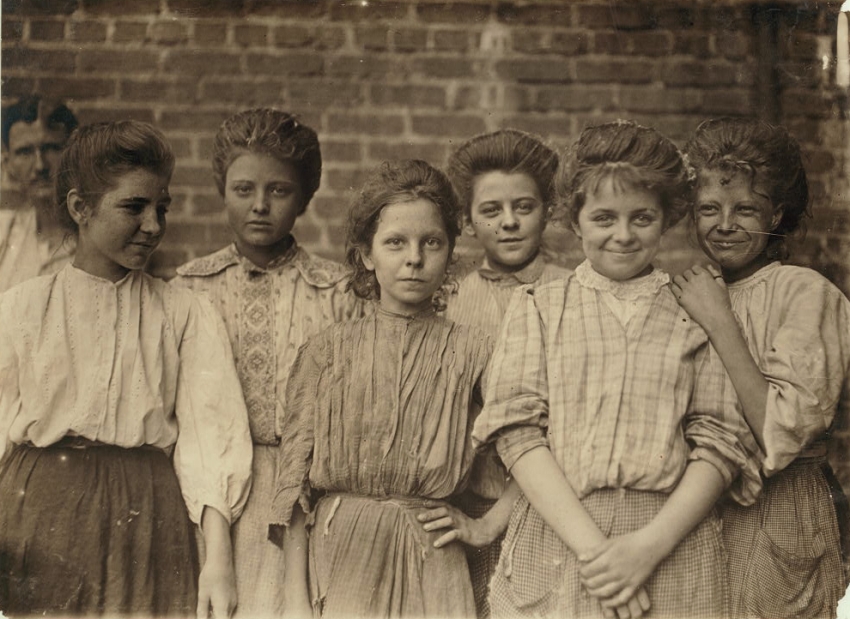
According to Hall, the reasons various textile companies selected Appalachia is due to the region’s isolation and the pool of what the industry considered “uneducated” workers. Hall concentrates specifically on the rayon industry’s Bemberg and Glanzstoff plants in Elizabethton, Carter County, Tennessee, where 30 percent of Bemberg’s jobs and 44 percent of Glanzstoff’s jobs were held by women, generally single, aged twenty-one and under.5)Hall, Jacquelyn Dowd. “Disorderly Women: Gender and Labor Militancy in the Appalachian South.” Jstor. Sep 11986. (accessed April 5, 2013). p. 360. Through the women’s personal accounts, Hall paints a picture of their hope and excitement at working in the mills. They regarded it as a means to escape from the drudgery of farm work, domestic work, and poverty. Once there, however, reality came fast and hard. The women worked long days and were exposed to the “caustic chemicals” used to produce rayon. The “petty regulations” smothered them and they were even denied bathroom breaks.6)Hall, Jacquelyn Dowd. “Disorderly Women: Gender and Labor Militancy in the Appalachian South.” Jstor. Sep 11986. (accessed April 5, 2013). pgs. 363-64. The women worked in this environment day after day with low wages and no raises. Yet men received higher wages and raises. This fair wage issue threw a lit match in the powder barrel.
III
On March 12, 1929, the teenage female Glanzstoff workforce banded together and walked out, convincing their counterparts to join them a day later. This small movement snowballed into a worker’s rights avalanche. The Bemberg plant joined them four days later.7)Tedesco, Marie. “Elizabethton Rayon Plants Strikes, 1929.” Tennessee Encyclopedia. Oct 8, 2017. The striking women gained support from unions. Town officials and plant managers secured Governor Henry Horton’s assistance. Troops and “armed guardsmen” were sent to intimidate and even wound protesters and picketers. A few Elizabethton businessmen kidnapped union officials, drove them across the state line, and told them not to return. The officials did return and the striking workers were livid.8)Tedesco, Marie. “Elizabethton Rayon Plants Strikes, 1929.” Tennessee Encyclopedia. Oct 8, 2017. One side’s escalation stood against another side’s intensification. In the end, the women had to concede, and, since the already weakened union had no power against such mounting pressure, the strike failed. Women were arrested. Workers were blacklisted and locked out. Some managed to ease back into their former jobs as domestic servants. Others found a way back into the mill when their married name gave them a new identity. Still others continued the fight for female workers’ justice, the effects of which can still be seen today.
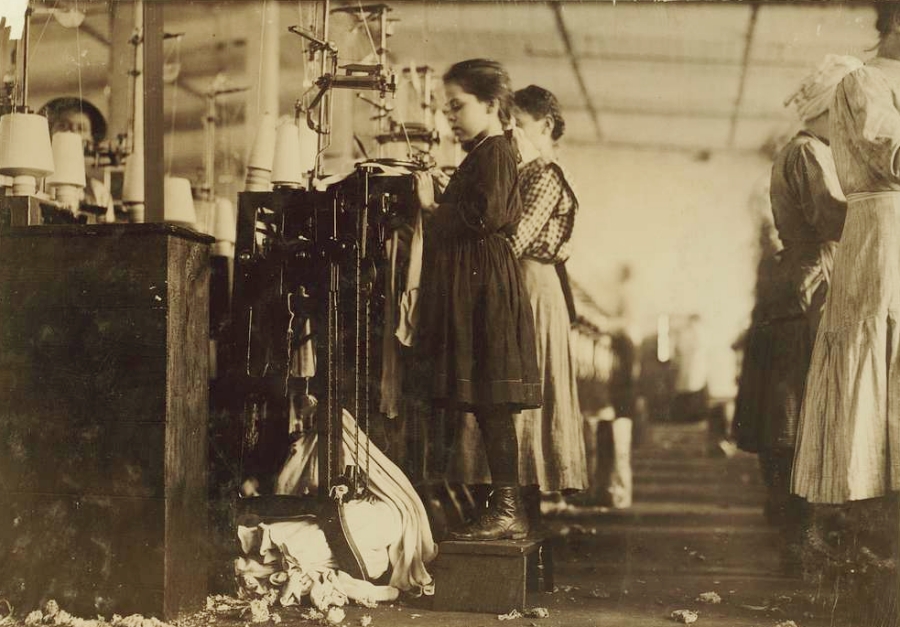
Hall further explains the textile industry’s working conditions that contributed to female activism in the 1920s. Women were under such close observation that any trip away from their work stations was scrupulously supervised at all times – something their male coworkers did not experience. Women’s appearances were heavily scrutinized, too. They couldn’t wear makeup or jewelry, and they were required to wear uniforms purchased with their own money. They were even forced to “rent houses at high rates” from the local real estate developer.9)Tedesco, Marie. “Elizabethton Rayon Plants Strikes, 1929.” Tennessee Encyclopedia. Oct 8, 2017. The article “Cotton Mill People: Work, Community, and Protest in the Textile South, 1880-1940,” by Jacquelyne Dowd Hall, Robert Korstad, and James LeLoudis describes the treatment of textile workers.
According to the article, cotton production surged in the mills before World War I, and the work was a monotonous ten-to-twelve-hour day where workers “walked, stretched, leaned, and pulled at their machines.”10)Hall, Jacquelyn Dowd, Robert Korstad, and James Leloudis. “Cotton Mill People: Work, Community, and Protest in the Textile South, 1880-1940.” The American Historical Review, 1986: Web., p. 255. Cotton fibers filtered through the air, stuck to every exposed area, and entered the lungs. The machinery was deafening, and the badly ventilated rooms generated a sweltering, smothering heat. One could easily see where the term sweatshop11)Dray, Philip. There is Power in a Union: The Epic Story of Labor in America. New York: Doubleday, 2010. p. 265. originated. Some mill supervisors were too severe with women and children, verbally intimidating them, and, at times, shaking the children. After World War I, the demand for cotton declined, so the textile industry as a whole looked for ways to cut costs. Supervisors pressured workers harder to make sure they didn’t “waste time” by talking, drinking water, or using bathroom facilities. Supervisors constantly monitored with stopwatches, clocking precisely how much time a worker could complete every single task. This strategy caused such a fast-paced system that many workers couldn’t keep pace. Business owners purchased faster machinery that did more work and cut out most laborers. To further agitate the situation, owners hired “college-trained supervisors” who had no knowledge of what work was like on the floor of the mill. Tensions escalated, and, as stated before, the situation led young women to strike in Elizabethton, Tennessee.12)Hall, Jacquelyn Dowd, Robert Korstad, and James Leloudis. “Cotton Mill People: Work, Community, and Protest in the Textile South, 1880-1940.” The American Historical Review, 1986: Web., pgs. 255, 266-270, 296.
The tactics striking women used to make their voices heard was a new occurrence in the mountains, and it got pretty violent, let me tell you. Once those teenage girls from the Glanzstoff plant decided they wouldn’t put up with low wages and bad working conditions, the strike quickly escalated. After things settled down, the Bemberg plant fired two union members, sparking another strike in April, 1929. The strikers countered the owners’ tactics by joining forces with the United Textile Workers. Women not only initiated the strike, they also led the way, shouting and singing, marching and protesting. They blocked roads with their bodies and refused to leave, even as threats heightened. Hundreds of strikers were arrested, “two houses were dynamited,” barns were set ablaze, and “a water main leading into Elizabethton was dynamited.”13)Tedesco, Marie. “Elizabethton Rayon Plants Strikes, 1929.” Tennessee Encyclopedia. Oct 8, 2017. To help those who no longer had an income, women workers organized community resources and pooled together what they had.14)Hall, Jacquelyn Dowd, Robert Korstad, and James Leloudis. “Cotton Mill People: Work, Community, and Protest in the Textile South, 1880-1940.” The American Historical Review, 1986: Web., p. 273. Eventually, mediators prevailed and reached a fragile agreement where “plants would reinstate former employees, would not discriminate against union members,” and would hear grievances.15)Tedesco, Marie. “Elizabethton Rayon Plants Strikes, 1929.” Tennessee Encyclopedia. Oct 8, 2017.
IV
Hall also conveys the female worker’s take on Appalachia’s views of women in general. Bessie Eden, for example, says of Appalachian farm life: “The girls were supposed to do housework and work in the fields. They were supposed to be slaves.”16)Hall, Jacquelyn Dowd. “Disorderly Women: Gender and Labor Militancy in the Appalachian South.” Jstor. Sep 11986. (accessed April 5, 2013)., p. 362. To be sure, the striking young women saw their mothers as strong, but they didn’t want the hard, seclusive life they lived. Yet, though women successfully obtained the vote, they had little hope of advancement in any facet of life. Labor was (and still is) no different. Women couldn’t be supervisors within the textile industry.17)Terrill, Thomas E. “Southern Mill Workers Review “Like a Family: The Making of a Southern Cotton Mill World” by Jacqueline Dowd Hall.” Reviews in American History, 1988: Web., p. 594. Women also earned significantly less than men, mostly due to jobs they were offered as opposed to jobs offered men. In other words, women couldn’t do “men’s work.”18)Fishback, Price V. “Operations of “Unfettered” Labor Markets: Exit and Voice in American Labor Markets at the Turn of the Century.” Journal of Economic Literature, 1998: Web. p. 747
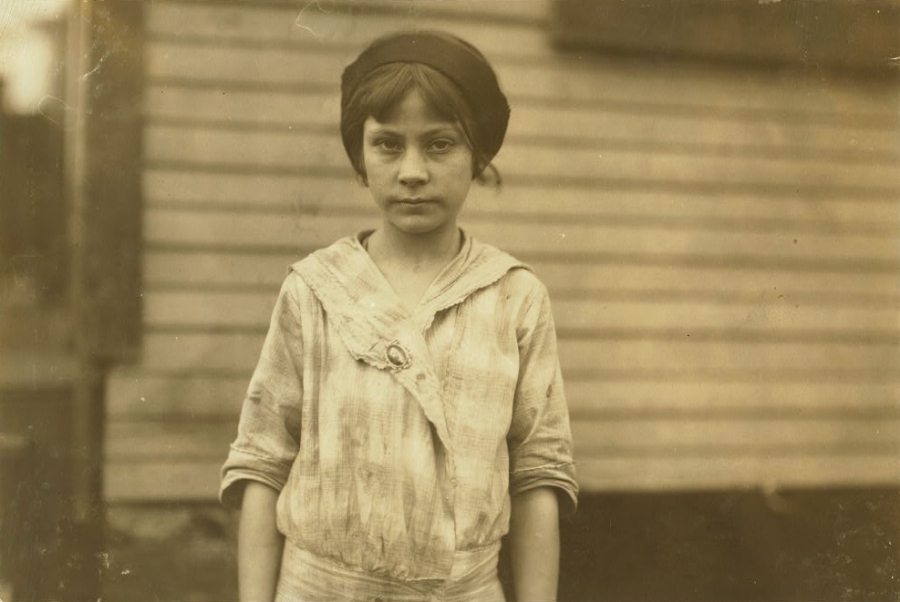
Appalachian women had an effective activist role in the textile labor movement. Hall provides a beautiful narrative of the women strikers. However, she doesn’t mention a defining moment regarding women and textile labor near the era: the 1911 Triangle Shirtwaist Company fire in New York City.19)The 1911 Triangle Shirtwaist Company fire started in a rag bin. The foreman tried to extinguish it but the hose was rotten and the valve was rusted shut. Of the four elevators, only one with a 12 person capacity worked, and made approximately four trips before it broke down. There were two stairwell exits. One was kept locked to prevent stealing. The other door opened inward. The fire spread. The company was housed within the top three floors of the building. A total of six hundred workers were there. All the workers were immigrants who spoke little to no English, almost all young girls and women. One hundred forty six persons died. Of that number, 49 succumbed to burns or smoke inhalation; 36 died jumping down the elevator shaft; 58 died jumping from the building onto the pavement below. Although it wasn’t located in Appalachia, the horrific event had to have some impact on female textile workers in Southern Appalachia. Hall also doesn’t provide much detail on sexual harassment in the workplace, which was considered normal, routine behavior. Still, the article illuminates the women’s extreme courage in throwing caution to the wind and bucking the system, despite the powerful storm around them.
Gallery:
** Featured Image of textile workers in 1916 from picryl
***Title quote found in Stephen K. Knapp’s East Tennessee State University thesis, “Women in the 1929 Textile Strikes in Elizabethton, Tennessee and Gastonia, North Carolina”
References
| ↑1, ↑4 | ICT Staff. “The Power of Cherokee Women.” Indian Country Today. September 13, 2018. |
|---|---|
| ↑2, ↑3 | Women History Blog. “Women’s Rights in Cherokee Society.” History of American Women. Dec 2008. |
| ↑5 | Hall, Jacquelyn Dowd. “Disorderly Women: Gender and Labor Militancy in the Appalachian South.” Jstor. Sep 11986. (accessed April 5, 2013). p. 360. |
| ↑6 | Hall, Jacquelyn Dowd. “Disorderly Women: Gender and Labor Militancy in the Appalachian South.” Jstor. Sep 11986. (accessed April 5, 2013). pgs. 363-64. |
| ↑7, ↑8, ↑9, ↑13, ↑15 | Tedesco, Marie. “Elizabethton Rayon Plants Strikes, 1929.” Tennessee Encyclopedia. Oct 8, 2017. |
| ↑10 | Hall, Jacquelyn Dowd, Robert Korstad, and James Leloudis. “Cotton Mill People: Work, Community, and Protest in the Textile South, 1880-1940.” The American Historical Review, 1986: Web., p. 255. |
| ↑11 | Dray, Philip. There is Power in a Union: The Epic Story of Labor in America. New York: Doubleday, 2010. p. 265. |
| ↑12 | Hall, Jacquelyn Dowd, Robert Korstad, and James Leloudis. “Cotton Mill People: Work, Community, and Protest in the Textile South, 1880-1940.” The American Historical Review, 1986: Web., pgs. 255, 266-270, 296. |
| ↑14 | Hall, Jacquelyn Dowd, Robert Korstad, and James Leloudis. “Cotton Mill People: Work, Community, and Protest in the Textile South, 1880-1940.” The American Historical Review, 1986: Web., p. 273. |
| ↑16 | Hall, Jacquelyn Dowd. “Disorderly Women: Gender and Labor Militancy in the Appalachian South.” Jstor. Sep 11986. (accessed April 5, 2013)., p. 362. |
| ↑17 | Terrill, Thomas E. “Southern Mill Workers Review “Like a Family: The Making of a Southern Cotton Mill World” by Jacqueline Dowd Hall.” Reviews in American History, 1988: Web., p. 594. |
| ↑18 | Fishback, Price V. “Operations of “Unfettered” Labor Markets: Exit and Voice in American Labor Markets at the Turn of the Century.” Journal of Economic Literature, 1998: Web. p. 747 |
| ↑19 | The 1911 Triangle Shirtwaist Company fire started in a rag bin. The foreman tried to extinguish it but the hose was rotten and the valve was rusted shut. Of the four elevators, only one with a 12 person capacity worked, and made approximately four trips before it broke down. There were two stairwell exits. One was kept locked to prevent stealing. The other door opened inward. The fire spread. The company was housed within the top three floors of the building. A total of six hundred workers were there. All the workers were immigrants who spoke little to no English, almost all young girls and women. One hundred forty six persons died. Of that number, 49 succumbed to burns or smoke inhalation; 36 died jumping down the elevator shaft; 58 died jumping from the building onto the pavement below. |
